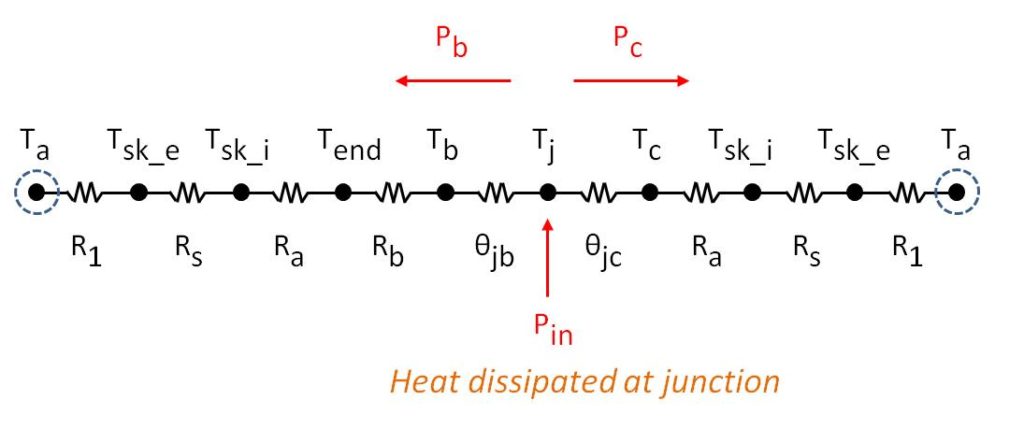During a feasibility analysis for electronics cooling solutions, the objective is to estimate the heat flow using engineering approaches and judgment. By applying a thermal resistance network to the heat flow pathways within the system quantitative estimates for heat flow can be developed as an initial screen for feasibility of component design.
As an example consider a single-chip BGA package on a PCB board in a device. As a first step, the approximate heat transfer paths from the power dissipating components need to be identified to develop the thermal resistance network. For this package the primary heat transfer paths are given in Figure 1.
Figure 1.
Two main heat dissipation paths from the die exist: to the case of the package and secondly, through the BGA and into the PCB. Heat from the case and board is then passed to the skin of the device for convection to the ambient environment.
In the thermal resistance network the two dissipation paths are represented by two branches: one through the case and a second through the board. The thermal resistance network is given in Figure 2.
Figure 2.
Flow through the case has resistances: Junction to Case (Θjc), Case to Skin Interior (Ra), Through the Skin (Rs) and Exterior Skin to Ambient (R1); and flow through the board has resistances: Junction to Board (Θjb), Through Board (Rb), Board to Interior of Skin (Ra), Through the Skin (Rs) and Exterior Skin to Ambient (R1).
For a feasibility analysis it is recommended that values providing a conservative assessment are used, aggressive estimates for heat transfer coefficient would severely overestimate the heat transfer rate and may lead to complacency that is not justified. Once an appropriate thermal resistance network has been developed the expected temperature rise for a given operating condition can be obtained. Further details of calculation of the temperature rise for the example described here will be discussed in the next blog. To be sure you don’t miss it, register on our Electronics Cooling page:
https://altasimtechnologies.com/technology-overview/electronics-cooling/


